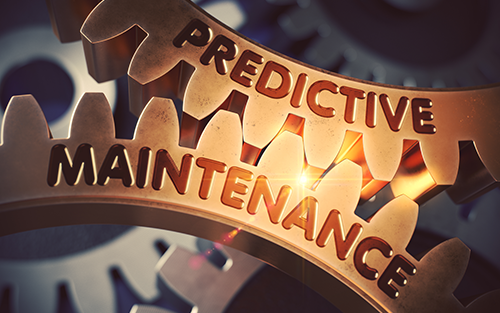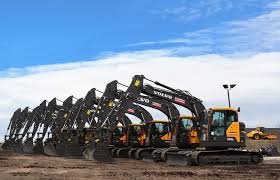Welcome to a world where breakdowns and unexpected repairs are a thing of the past! In this guide, we’ll delve into the realm of preventive maintenance – your ticket to smooth operations, increased efficiency, and cost savings. Buckle up as we explore how proactive care for your equipment and assets can revolutionize the way you do business. Let’s dive in!
What is Preventive Maintenance?
Preventive maintenance is like giving your equipment a VIP treatment to keep it running smoothly. It’s all about staying one step ahead of potential issues before they spiral into costly breakdowns. By conducting regular inspections, tune-ups, and replacements according to a set schedule, you’re essentially extending the lifespan of your valuable assets. This proactive approach not only minimizes unexpected downtime but also ensures that your operations run like a well-oiled machine.
Think of preventive maintenance as a proactive strategy rather than a reactive one. Instead of waiting for something to go wrong, you’re actively taking measures to prevent problems from occurring in the first place. It’s all about being strategic with your maintenance efforts and investing in the long-term health of your equipment. So, whether it’s changing filters, lubricating moving parts, or calibrating systems – every little bit counts towards keeping things running smoothly.
In essence, preventive maintenance is the secret sauce that keeps businesses ticking like clockwork.
The Importance of Preventive Maintenance
Regular preventive maintenance is crucial in ensuring the longevity and efficiency of equipment and assets. By proactively addressing potential issues before they escalate, businesses can avoid costly repairs and unexpected downtime.
Preventive maintenance also plays a significant role in maintaining workplace safety by identifying and fixing hazards early on. This not only protects employees but also helps companies comply with regulations and standards.
Furthermore, having a solid preventive maintenance plan in place can improve overall operational performance. When machines are well-maintained, they run smoother, consume less energy, and produce higher-quality output consistently.
Prioritizing preventive maintenance demonstrates a commitment to reliability, productivity, and sustainability within an organization – making it an essential component of successful business operations.
The Benefits of Regular Maintenance
Regular maintenance offers a myriad of benefits for businesses, both big and small. By staying proactive in keeping equipment and assets in optimal condition, companies can prevent unexpected breakdowns that disrupt operations. This leads to increased productivity and efficiency as downtime is minimized.
Moreover, preventive maintenance helps extend the lifespan of machinery and tools, ultimately saving money on costly repairs or replacements. It also enhances workplace safety by ensuring that equipment is functioning correctly and poses no risks to employees.
Consistent upkeep reduces energy consumption since well-maintained machines operate more efficiently. This not only contributes to cost savings but also aligns with environmental sustainability efforts. Investing time and resources into regular maintenance pays off in the long run by fostering a reliable work environment where operations run smoothly without interruptions or unnecessary expenses.
Creating a Preventive Maintenance Plan
Creating a Preventive Maintenance Plan is crucial to keep your equipment and assets running smoothly. The first step in this process is to identify all the equipment that requires maintenance. This includes machinery, vehicles, computers, and other essential assets.
Once you have identified your equipment, the next step is to establish maintenance tasks and a schedule for each item. Determine what needs to be done regularly to prevent breakdowns or malfunctions. This could include inspections, lubrication, or parts replacements.
After setting up the tasks and schedule, it’s important to assign responsibilities to team members and set deadlines for completion. Clear communication about who is responsible for what will help ensure that tasks are completed on time.
Implement the plan and track its progress regularly. Make adjustments as needed based on feedback from technicians or changes in equipment usage patterns. A well-thought-out preventive maintenance plan can save time and money in the long run by avoiding costly repairs or replacements.
Identify Equipment and Assets
When it comes to implementing a successful preventive maintenance plan, the first crucial step is identifying all equipment and assets within your facility. This includes machinery, tools, vehicles, computers – anything essential for your operations.
Start by conducting a comprehensive inventory of all the equipment you have. Note down important details such as make and model, serial numbers, installation dates, and any specific maintenance history that may exist.
It’s also vital to prioritize your assets based on criticality. Equipment that is fundamental to your production processes should be given top priority in terms of maintenance scheduling.
By understanding what you have and its importance to your operations, you can effectively plan and ensure that each asset receives the necessary attention it requires for optimal functioning.
Establish Maintenance Tasks and Schedule
Once you’ve identified the equipment and assets in need of preventive maintenance, the next crucial step is to establish maintenance tasks and schedules. Start by listing out specific tasks that need to be performed regularly to ensure the proper functioning of each asset. This could include inspections, cleanings, lubrications, or parts replacements.
Next, create a detailed schedule outlining when each task should be carried out. Consider factors like equipment usage patterns, manufacturer recommendations, and industry best practices when determining the frequency of maintenance activities. Having a well-defined schedule helps in preventing unexpected breakdowns and prolonging the lifespan of your assets.
Assign responsibilities for each task to designated team members based on their expertise and availability. Communicate expectations and deadlines to ensure accountability and timely completion of maintenance activities. Regularly review progress against the established schedule to track performance and make any necessary adjustments for continuous improvement.
By establishing clear maintenance tasks and schedules upfront, you can proactively manage your assets’ upkeep and minimize costly downtime due to unforeseen failures.
Assign Responsibilities and Set Deadlines
When it comes to preventive maintenance, assigning responsibilities and setting deadlines is crucial for the success of your maintenance plan. Each team member should have clear roles and tasks assigned to them. This ensures accountability and efficiency in carrying out maintenance activities.
By clearly defining responsibilities, you avoid confusion and ensure that everyone knows what they are expected to do. Assign tasks based on each individual’s skill set and expertise to maximize productivity.
Setting deadlines is essential to keep the maintenance plan on track. Deadlines create a sense of urgency and help prioritize tasks effectively. Make sure deadlines are realistic yet challenging enough to motivate team members to complete their assignments promptly.
Communication is key when assigning responsibilities and setting deadlines. Keep an open line of communication with your team members to address any issues or concerns that may arise during the maintenance process.
Implement and Track the Plan
After diligently crafting your preventive maintenance plan, the next crucial step is to put it into action. Implementation is where the real magic happens – it’s time to roll up your sleeves and get to work.
Start by assigning tasks to designated team members or technicians responsible for carrying out the maintenance activities. Communicate expectations, deadlines, and procedures to ensure efficiency in execution.
Tracking progress is key in ensuring that maintenance tasks are being completed on schedule and according to plan. Use a reliable system or software to monitor work orders, log any issues encountered, and track equipment performance over time.
Regularly review and analyze data collected during implementation to identify patterns, trends, or areas for improvement. Adjust your preventive maintenance plan as needed based on these insights for continuous optimization and effectiveness.
Common Mistakes to Avoid in Preventive Maintenance
Neglecting to regularly update your preventive maintenance plan can lead to inefficiencies and overlooked tasks. Failing to identify all the equipment and assets that require maintenance can result in unexpected breakdowns. Setting unrealistic maintenance schedules or not assigning responsibilities clearly may confuse team members.
Ignoring regular inspections and relying solely on reactive maintenance can be a costly mistake in the long run. Neglecting to track and analyze maintenance data could prevent you from identifying trends or areas for improvement. Forgetting to train employees on proper maintenance procedures may lead to incorrect or incomplete work being done.
Not communicating effectively with your team about the importance of preventive maintenance might result in lacklustre adherence to the plan. Skipping routine checks or postponing scheduled tasks due to time constraints can compromise the effectiveness of your preventive maintenance efforts.
Conclusion
Implementing a preventive maintenance plan is crucial for the longevity and efficiency of your equipment and assets. By identifying, scheduling, assigning responsibilities, and tracking maintenance tasks, you can avoid costly breakdowns and downtime. Remember to avoid common mistakes like neglecting regular inspections or overlooking small issues that could lead to larger problems down the line. Stay proactive with your maintenance efforts to ensure smooth operations and maximize the lifespan of your valuable assets. Prioritize preventive maintenance today for a more productive tomorrow!







